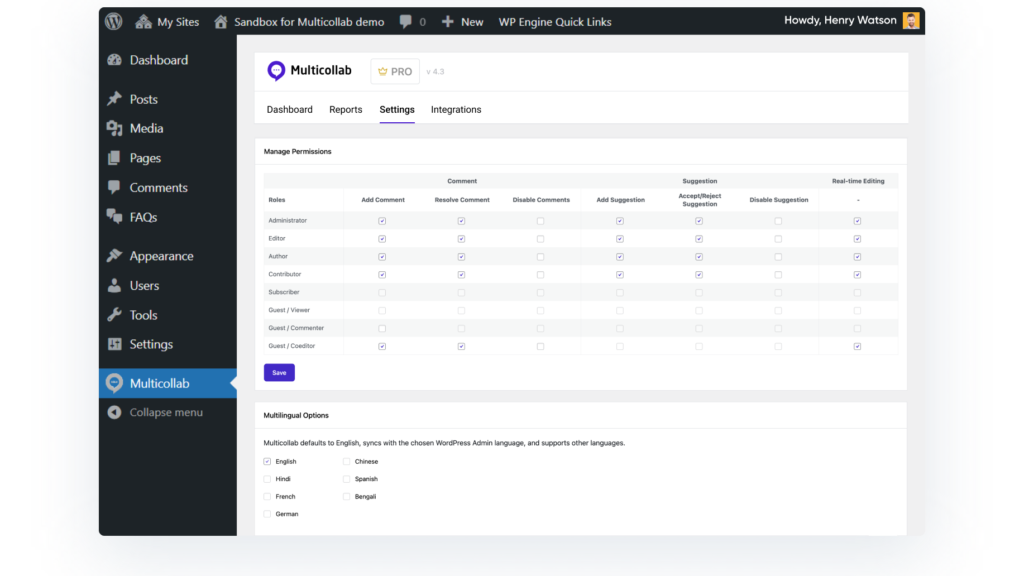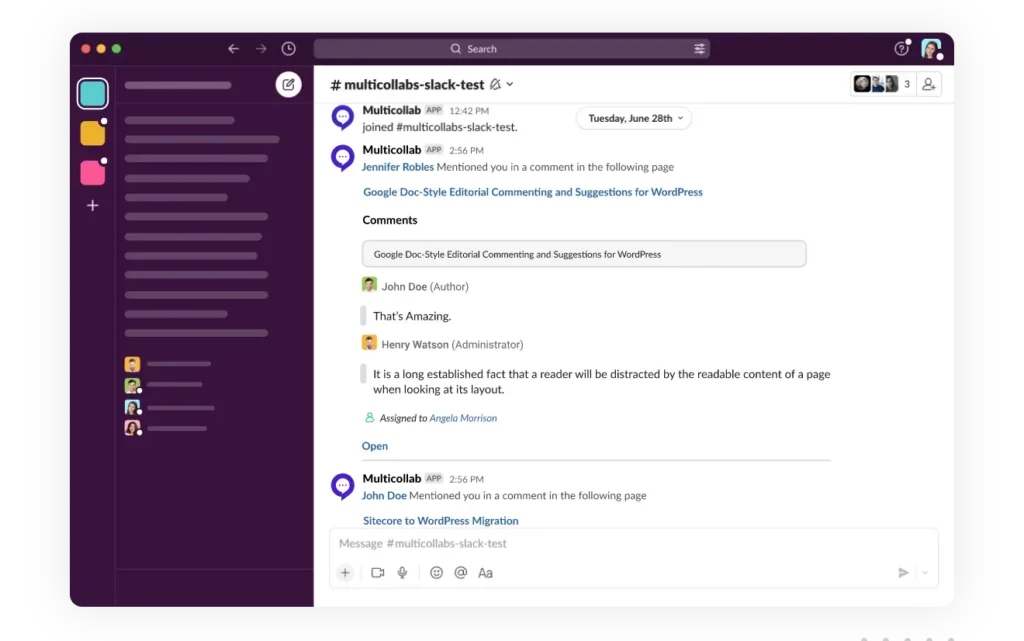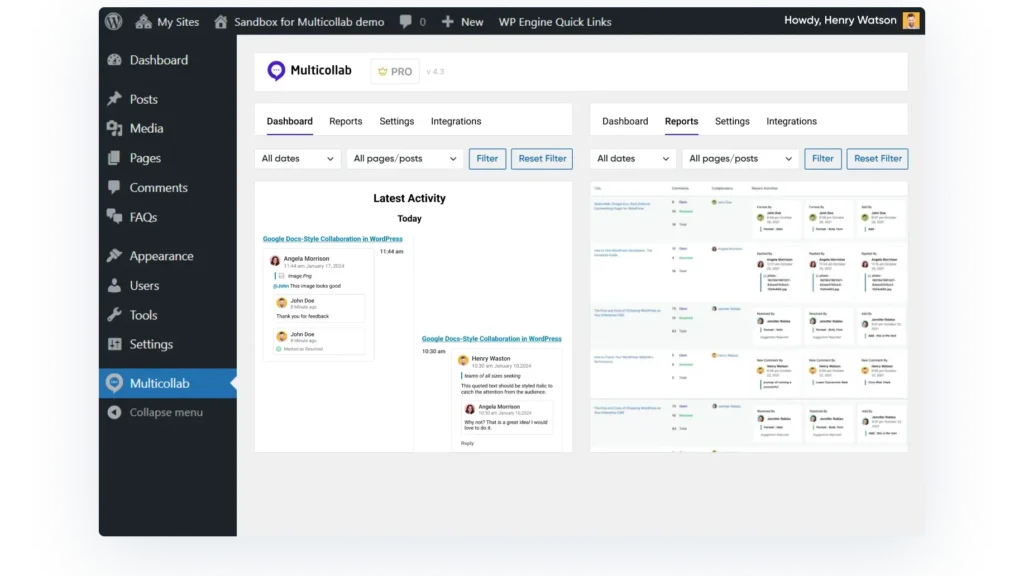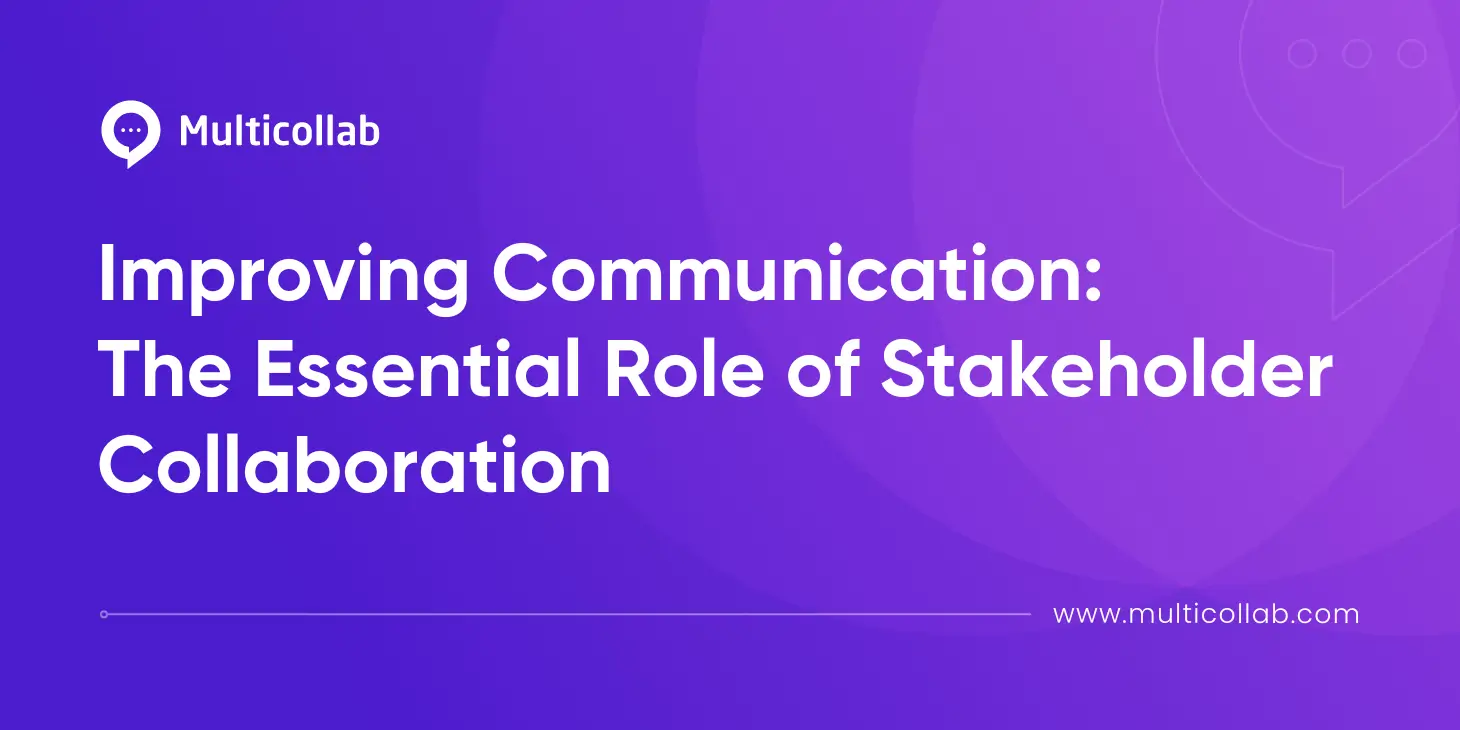Table of Contents
For modern businesses to succeed, the ability to collaborate effectively with stakeholders is a must; whether with internal team members or external partners.
Internal stakeholders include members of the project team, various departments within the organization, and senior management.
External stakeholders, on the other hand, include clients, customers, investors, and other entities with a vested interest in the project’s outcome.
Effective stakeholder collaboration fosters better decision-making by leveraging diverse perspectives and expertise. Secondly, it promotes synergy among team members and other stakeholders, leading to smoother project execution. Finally, it enhances project efficiency by ensuring alignment with stakeholder expectations and objectives.
In this guide, we’ll explore the key challenges of stakeholder collaboration and provide practical tips for navigating them effectively. So, let’s dive in.
Addressing the Challenges of Stakeholder Collaboration
While engaging in stakeholder collaboration, challenges inevitably arise. Project managers frequently encounter hurdles such as dispersed feedback, communication breakdowns, and lengthy content transfers, all of which can hinder progress. Identifying these challenges is the first step towards eliminating them.
Let’s delve into some of the most common challenges faced in stakeholder collaboration.
Lack of Centralized Communication
Without a designated hub for communication and decision-making, stakeholders often struggle to stay informed and engaged. This challenge becomes particularly significant when working with external stakeholders who may not have access to internal communication channels.
When communication is dispersed across multiple platforms, feedback becomes fragmented, making it difficult to take action. Miscommunication and inefficiencies inevitably follow, as stakeholders may not be aware of the latest developments or decisions. To address this challenge, organizations must invest in robust communication tools that streamline collaboration and ensure all stakeholders are on the same page.
Lack of Alignment on Goals and Expectations
Another common challenge in stakeholder collaboration is the lack of alignment on goals and expectations. With multiple stakeholders involved, each may have their own objectives and priorities, leading to conflicting agendas and paths.
Misaligned goals and expectations can result in inefficiencies, prolonged feedback loops, and stakeholder dissatisfaction. To mitigate this challenge, project managers must facilitate open and transparent communication to ensure all stakeholders are aligned on the project’s overarching goals and objectives. Regular meetings, progress updates, and stakeholder engagement sessions can help foster alignment and keep everyone focused on the same objectives.
Lack of Engagement
Effective stakeholder collaboration is based on active engagement from all parties involved. However, achieving meaningful engagement, especially with external stakeholders, can be a significant challenge.
Poor stakeholder engagement can manifest in various ways, including a lack of communication, divergent priorities, and project inertia. Without active involvement from stakeholders, projects may stagnate, deadlines may be missed, and deliverables may fall short of expectations.
To combat this challenge, organizations must prioritize stakeholder engagement from the outset. This may involve soliciting feedback, involving stakeholders in decision-making processes, and providing regular updates on project progress. Encouraging teamwork and making everyone feel included helps organizations beat the challenge of low stakeholder involvement and achieve project goals.
How to Improve Stakeholder Collaboration?
Recognizing the importance of addressing the above obstacles head-on, let’s explore some practical steps to enhance stakeholder collaboration and drive project success.
Identify and Analyze Your Stakeholders
Before embarking on any project, it’s essential to identify and analyze all stakeholders involved. This comprehensive understanding ensures alignment on goals and expectations from the outset, minimizing the risk of miscommunications or misunderstandings later on.
- Begin by compiling a list of all stakeholders who will be impacted by the project.
- Take the time to delve into their interests, expectations, priorities, and level of involvement.
- Identifying potential sources of conflict early in the project lifecycle allows teams to proactively address these issues and foster alignment.
Moreover, pinpointing key stakeholders upfront enables the project team to focus their efforts and priorities according to the interests of the most influential stakeholders. This strategic approach ensures that the project remains on track and aligned with stakeholders’ expectations throughout its lifecycle.
Establish Clear Communication Channels
Decentralized communication can hinder collaboration and lead to inefficiencies in project management. To overcome this challenge, establish clear and centralized communication channels that facilitate seamless information flow among all stakeholders.
Utilizing a cohesive hub for communication ensures that feedback is consolidated and easily actionable. This centralized approach prevents information from being scattered across multiple channels, making it simpler to identify and address potential issues or bottlenecks promptly.
Additionally, laying out a clear communication plan early in the project lifecycle is crucial. Regular meetings to discuss progress, align on goals, and prioritize deliverables keep stakeholders engaged and informed, driving project momentum and success.
Define Clear Roles and Responsibilities
Undefined roles and responsibilities are major contributors to project inefficiency. When stakeholders are unclear about expectations or points of contact, it can lead to bottlenecks and communication breakdowns.
Define roles and responsibilities at the project’s outset to provide stakeholders with clear expectations and points of contact for key deliverables. This clarity ensures that stakeholders understand their responsibilities throughout the project lifecycle, minimizing lengthy feedback loops and enhancing overall efficiency.
Leverage Collaboration Tools
The right collaboration tools can revolutionize stakeholder collaboration, keeping projects on track and enhancing efficiency. Depending on the project’s nature, various collaboration tools can streamline communication, document sharing, project management, and file management.
Document collaboration tools, communication platforms, project management software, and file management systems are just a few examples of tools that can enhance collaboration and drive project success.
For further insights on the best tools available, refer to Multicollab’s guide on top collaboration tools.
Introducing Multicollab: Revolutionizing Stakeholder Collaboration
Multicollab is a game-changer for WordPress-based content stakeholder collaboration, offering content teams a powerful tool to streamline communication and enhance collaboration with stakeholders. With its array of features tailored to address the challenges of stakeholder engagement, Multicollab revolutionizes how teams collaborate on projects.
One of Multicollab’s standout features is its real-time document collaboration functionality, allowing both internal and external content collaborators to work simultaneously on drafts. Users can collaborate with multiple users simultaneously and edit content together in real-time. Hence, content teams can work more efficiently, make instant changes, and content come to life collaboratively – right in the WordPress interface.
Multicollab’s custom roles and permissions feature lets administrators define custom roles and permissions, specifying who can view or edit content. This not only aids transparency but also prevents collaborative inertia by ensuring that only relevant collaborators can access each project.

To keep stakeholders informed and engaged, Multicollab incorporates automatic Slack and email notifications. Teams can quickly review and easily click notifications to respond directly in WordPress. Team members receive instant alerts when tasks are assigned to them, enhancing accountability and clarity in roles and responsibilities.

Furthermore, Multicollab provides robust activity logs and Snapshot reporting features. With the Advanced Dashboard functionality, teams can get better insight into their editorial workflow with transparent data points and an intuitive reporting feature. The Activity Timeline monitors collaboration and tracks progress across all pages and posts with easy filtering to view by user, content categories, and time stamps.

Next Steps: Enhancing Your Stakeholder Collaboration Strategies with Multicollab
Effective stakeholder collaboration can help overcome common challenges such as decentralized communication, misalignment of goals, and low stakeholder engagement. However, having the right tools is equally crucial for effective collaboration.
Multicollab emerges as the ultimate solution, offering features like real-time collaboration, robust permissions management, and automatic notifications to streamline communication and coordination.
Don’t wait any longer – seize the opportunity to revolutionize your stakeholder collaboration. Take the next step in transforming your editorial collaboration by getting started with Multicollab today!








